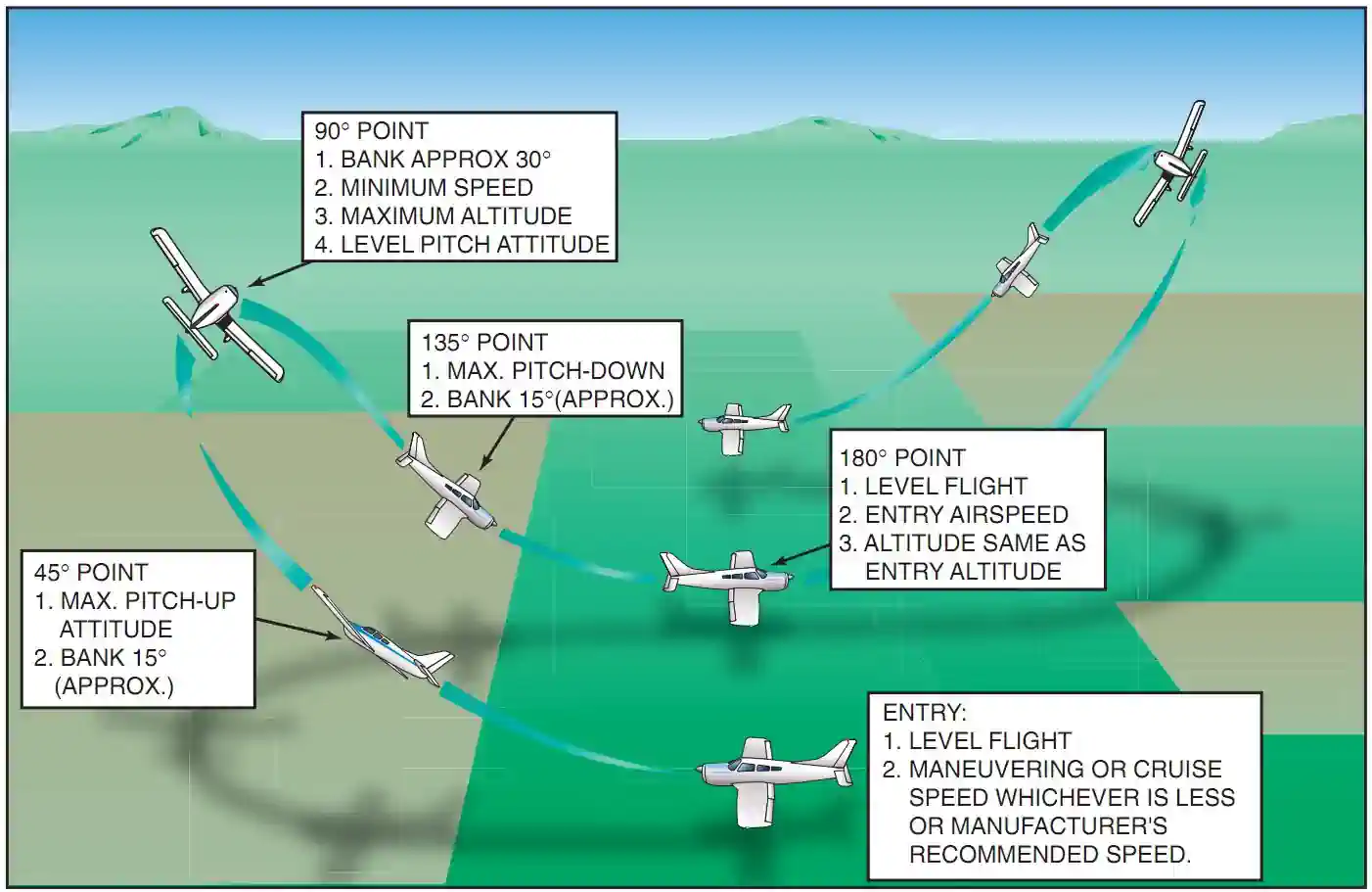Lazy Eights Purpose:
- According to the AOPA, The lazy eight is one of the first maneuvers I perform in any new-to-me airplane because it quickly reveals the airplane's control harmony (or lack of it) through constantly changing combinations of pitch attitudes, bank angles, and airspeeds. It's incredibly helpful for that purpose, even when I don't get the headings and altitudes just right
Lazy Eights Procedure:
WARNING:
All procedures are GENERALIZED.
Always fly per Pilot Operating Handbook procedures,
observing any relevant Standard Operating Procedures (SOPs)
- Perform clearing turns
- Adjust the pitch and power to maintain altitude and set cruise power
- Trim as necessary
- Pick 45°, 90°, and 135° reference points on or out to the horizon
- The farther away, the more accurate and steady they will be
- From a straight and level flight, initiate a climbing turn (simultaneously increase bank and pitch slowly) in the direction of the 45° reference point
- Slowly increase bank and pitch so that at the 45° point the airplane is passing through 15° of bank and maximum pitch up (around 10°)
- If bank is too fast, the aircraft will increase the rate of turn too quickly and reach 45° point before highest pitch is attained
- At the 45° reference point the maximum pitch up (highest) attitude should be achieved with a 15° bank angle continuing to increase to 30°
- From the 45° reference point, while allowing the bank angle to continue increasing, allow the pitch to decrease so that at the 90° reference point the maximum bank angle (30°) is achieved and the pitch attitude is passing through level flight at minimum airspeed (5-10 knots above VS
- Right rudder pressure will have to be applied to counteract torque
- More right rudder is required during the climbing turn to the right than in the turn to the left
- Record altitude gain at the 90° point
- From the 90° reference point, allow the pitch attitude to continue decreasing and initiate a slow decrease in the bank angle, continuing a descending turn in the direction of the 135° reference point
- Continue to decrease pitch and slowly decrease bank so that at the 135° point, the airplane is passing through 15° of bank and maximum pitch down (7° nose down)
- At the 135° reference point, the maximum pitch down (lowest) attitude should be achieved with a 15° bank angle continuing to decrease to 0°
- From the 135° reference point, continue decreasing the bank angle while allowing the pitch to increase so that the airplane returns to the entry airspeed and altitude by the 180° reference point
- The airspeed should not exceed the entry airspeed during the turn from the 90° reference point to the 180° reference point
- From the 180° point, immediately commence a climbing turn in the opposite direction, repeating the steps above
- Upon completion of the maneuver, resume normal cruise
- Re-trim as necessary
- Complete cruise flow/checklist
Lazy Eights Common Errors:
- Failure to adequately clear the area
- Using the nose, or top of engine cowl, instead of the true longitudinal axis, resulting in unsymmetrical loops
- Watching the airplane instead of the reference points
- Inadequate planning, resulting in the peaks of the loops both above and below the horizon not coming in the proper place
- Control roughness, usually caused by attempts to counteract poor planning
- Persistent gain or loss of altitude with the completion of each eight
- Attempting to perform the maneuver rhythmically, resulting in poor pattern symmetry
- Allowing the airplane to "fall" out of the tops of the loops rather than flying the airplane through the maneuver
- Slipping and/or skidding
- Failure to scan for other traffic
Airman Certification Standards:
Conclusion:
- Consider practicing maneuvers on a flight simulator to introduce yourself to maneuvers or knock off rust
- Still looking for something? Continue searching:
